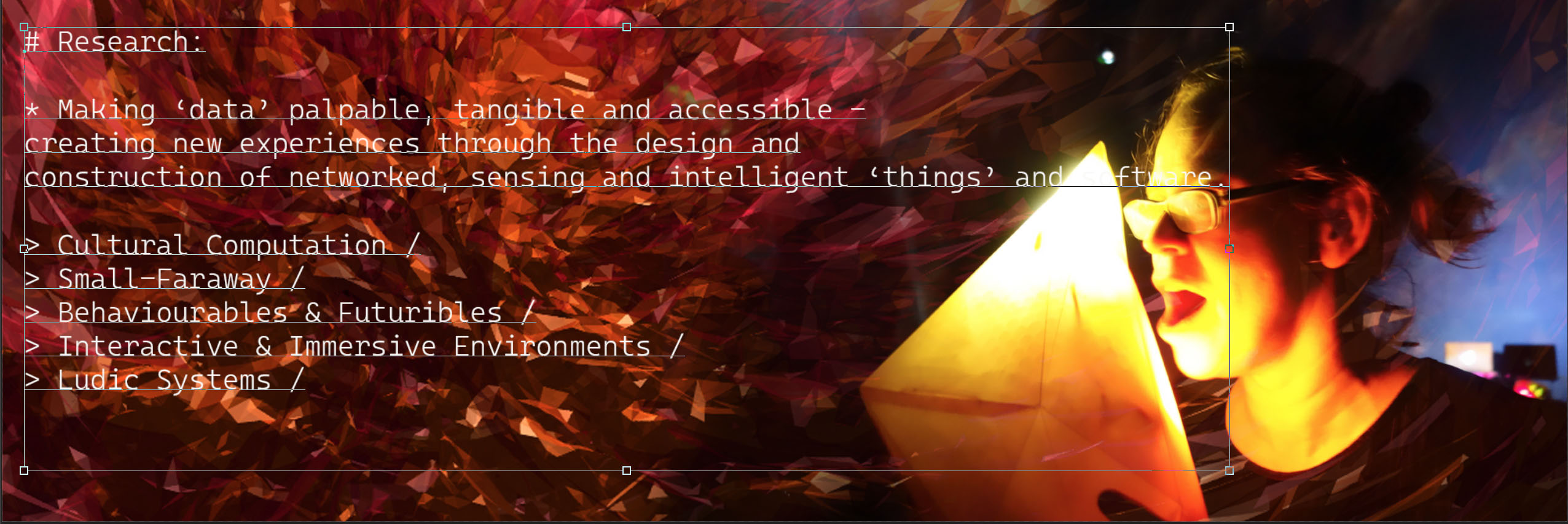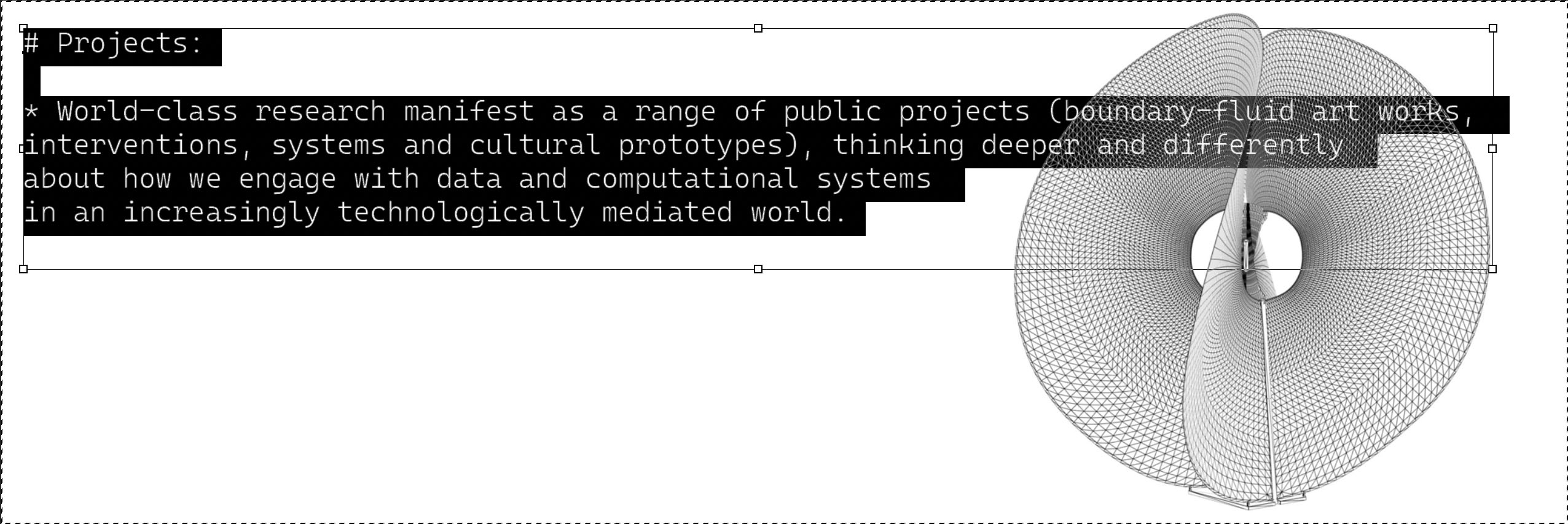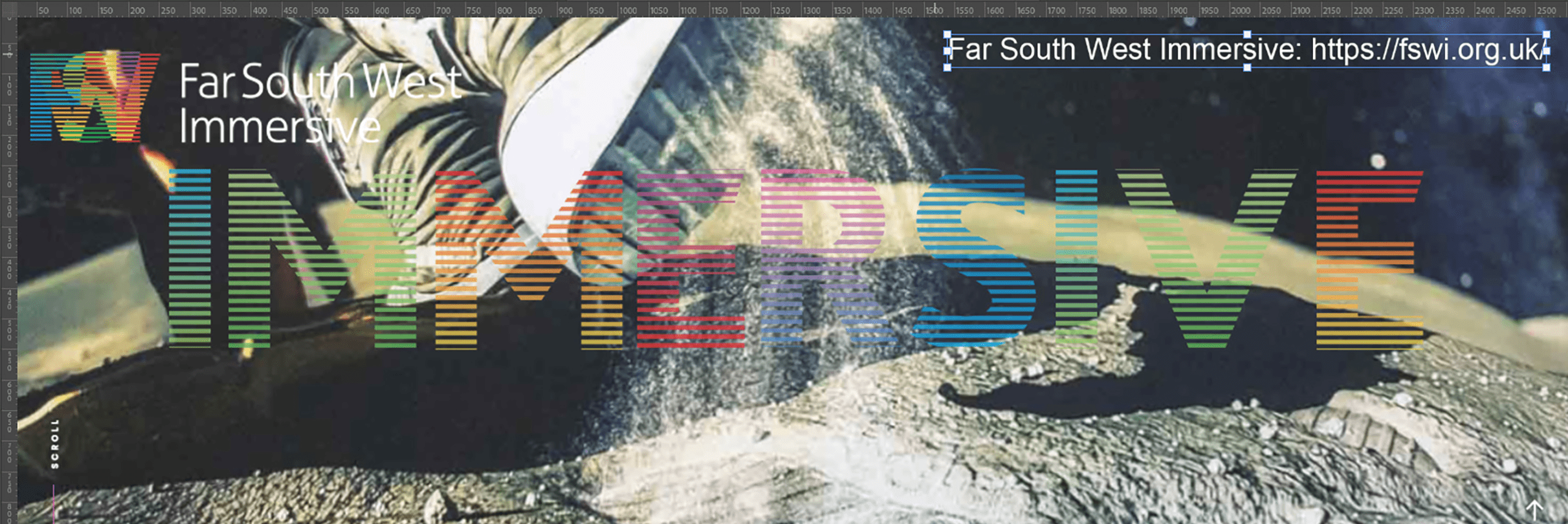Interactive & Immersive Environments:
The development of meaningful experiences in digitally enhanced physical, augmented and virtual spaces presents the research challenge for this theme. The digital Umwelt is explored through interventions in the fabric of urban and rural environments, augmentation using real-time data layering on mobile devises and the construction of immersive virtual environments for head mounted systems or the shared VR of the fulldome environment.

Much of i-DAT’s visualisation and simulation work (in VR/AR and Shared VR) takes place through the The Immersive Vision Theatre (IVT). The IVT is a transdisciplinary instrument for the manifestation of material and imaginary worlds. Plymouth University’s William Day Planetarium (built in 1967) has been reborn as a 40 seat Immersive Vision Theatre (IVT). The IVT is used for a range of learning, entertainment and research activities, including transdisciplinary teaching, bleeding edge research in modelling and data visualisation. We can fly you to the edge of the observable Universe, across microscopic nano-landscapes, or immerse you in interactive data-scapes.

i-DAT has collaborated with the Wolfson Nanomaterials & Devices Laboratory (part of the University of Plymouths Nanotechnology research activity) on several projects. This includes the development of fulldome ‘Nanoscapes’ created by measuring atomic forces at a nano scale using their Atomic Force Microscope (AFM). These forces generate a data-set which can be translated into a height map and subsequently into a fulldome corrected landscape.
Arch-OS:

Arch-OS represents an evolution in intelligent architecture, interactive art and ubiquitous computing. An ‘Operating System’ for contemporary architecture (Arch-OS, ‘software for buildings’) has been developed to manifest the life of a building and provide artists, engineers and scientists with a unique environment for developing transdisciplinary work and new public art. The Arch-OS experience combines a rich mix of the physical and virtual by incorporating the technology of ‘smart’ buildings into new dynamic virtual architectures.

With thanks to the MRI Department, Derriford Hospital, Plymouth Hospitals NHS Trust for the full body MRI Scan. The process involves the translation of Dicom images into a volumetric model which then becomes a navigable immersive architecture within Unity 3D (using Phage mobile interactive devices).

E / M / D / L has built an international network for the exchange of artistic and technological expertise, with the goal of researching and documenting a language and grammar unique to the full-dome medium. Bringing together four European and three Canadian institutions and cultural partners, all leaders in this field, the project aims to share and expand skills, methodologies, strategies and content within this promising creative vehicle. Between February 2014 and September 2015, the participants take part in eight residencies and public presentations offered in five countries, where a mobile domic architectural structure equipped with cutting-edge technologies is set up. Finally, E / M / D / L will end with a series of performances at the world’s most sophisticated virtual theatre, the Satosphere in Montreal, Canada.

This volumetric rendering of a Drosophila, or common fruit fly is composed of 600 slices at 6 μm digitized through a scanning technique developed at the University of Vienna. Converted to a format readable by 3D visualisation software such as 3DS Max this visualisation was output as a 3D video projection to be experienced in a dome environment. Because of the procedural structure of the 3D model it is possible for a viewer to interact with the image exploring the inner bodily cavities of the fly.






You must be logged in to post a comment.